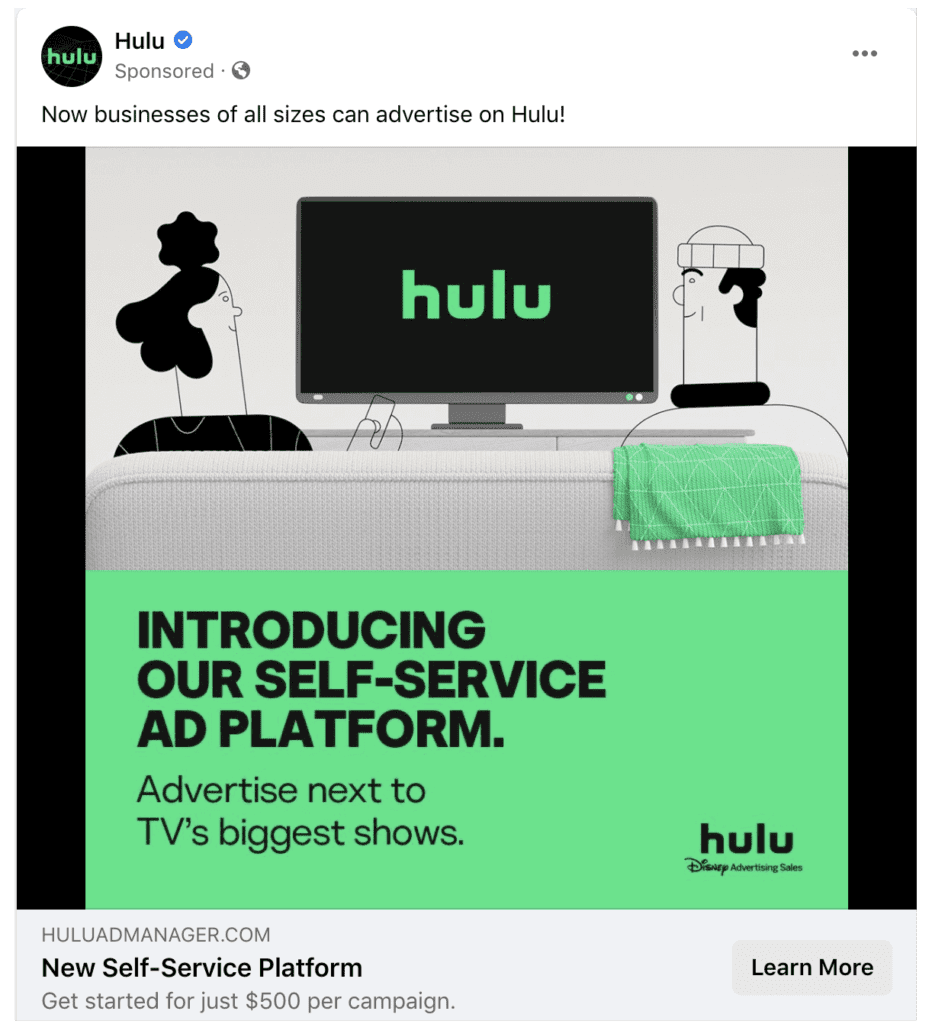When it comes to advertising, the two powerhouses are, without question, Google and Facebook; however, the two platforms are not created equal when it comes to creating paid ads. The biggest difference? If you want to see success, you utilize Google to advertise to those toward the bottom of your sales funnel and Facebook towards those at the top of the funnel. This makes remarketing, a top-funnel strategy, on Facebook significant.
You can learn more about how to balance your budget between the two here (and more about why Facebook is the channel best used for remarketing), but in the meantime, read below to learn more about how to find success and create a winning strategy.
Quick Recap: 3 Primary Ways to Remarket on Facebook
Facebook provides businesses three different avenues to go down when running a remarketing campaign. The different options are available to use for everyone. Still, some are better suited for specific types of businesses or certain marketing campaigns, so it’s important to understand your options:
1. Custom Audience from Your List
A custom audience list on Facebook can be created for businesses who know their customers either because they visited their actual storefront or from a CRM platform that records and manages interactions with customers (whether via a newsletter, lead form, chat, etc.). These works are your business will provide Facebook with information on the customer (name, email, phone number, address, etc.), and Facebook can then match this information with their Facebook profile. After doing this, your business will have your customer list uploaded onto Facebook, where you can serve ads to this audience. Additionally, you can view these users’ demographics to create a larger list of similar audience members and advertise to them as well, known as “lookalike audiences.”
2. Facebook Pixel Data
The Facebook pixel is a small piece of code that is embedded into a company’s webpage. The code tracks the visitors and their actions when they visit the page. This includes the different subpages they visit on the site, the amount of time spent, and whether they added items to their online cart. It can also track the Facebook ads a visitor previously saw before getting to the company’s page. Facebook Pixel allows a business to ensure their ads are being shown to the right audience to drive sales and to measure the impact that an ad had on an audience.
3. Facebook SDK
Facebook SDK is used to track users using a company’s app and how they are using the app. Facebook SDK is similar to Facebook Pixel data in this way because it follows the user as they navigate through a business’s information. However, this piece of Facebook code is used specifically for mobile apps. Facebook SDK is best used for tracking data, analytics, and traffic on a business’s mobile app.
4 Steps to Creating a Winning Remarketing Strategy
1. Choose a Retarget Method
The first step in creating a successful remarketing campaign on Facebook is to decide whether you will use a custom audience list, Facebook Pixel, or Facebook SDK. A small business will benefit immensely from using a custom audience list to create niche advertisements for their customers to retarget them perfectly. In contrast, larger businesses should consider coding Facebook Pixel into their page to track their users and retarget them as they surf the web. The different methods can be used in conjunction with one another to ensure that most visitors are being targeted.
2. Create Winning Copy
Regardless of what you’re advertising, how you advertise it will make a difference. Including the right photos and imagery is key, but to take things one step further, Facebook ads with video increase brand awareness by up to 67%, according to Yans Media.
When you create your photos, video, and copy, there are three different angles you can take that will depend on whom you’re targeting and where you are in your remarketing process. These include:
- Advertise for Awareness. A brand awareness advertisement should be the first type used in a remarketing campaign. These types of advertisements can be informational videos, infographics, or basic pictures of the brand. These advertisements serve to inform a newer visitor about your brand, what you stand for, and what you can offer. The advertisements do not typically convert to sales but rather serve to create a relationship between a potential customer and your brand. You can determine whom to serve these ads based on either your custom audience list or the demographic data that the Facebook pixel code pulls for your business. Below is an example from Hulu – I wasn’t looking anything up regarding Hulu, but I do already have the service, so they likely have me on a list to be aware of their newest product.

- Advertise Previously Viewed Products. The next advertisement that should be served to your visitors is a product or service that a user has already viewed on your webpage. If a customer has an item already in their cart on your website or within your app, this retargeting method will feed the user the exact image or a video of this product on their Facebook page. In the example below, this company knows that I was looking up this exact product:

- Advertise Related Products. Another way to increase sales through Facebook remarketing is by serving advertisements of related products to your users. These remarketing advertisements can be extremely successful as they offer something slightly different from what a user has already seen. For example, if a user had been viewing a coffee table on a furniture website, the website can serve this user similar coffee tables on his/her Facebook feed. This can either remind the user of the coffee table they were searching for since they are clearly in the market while offering him/her other options. Below is an example, and notice how you can scroll to see more:

Over time and as your budget grows, you can play around with which types of advertisements are sent to which audiences to determine where you see the most clicks, which brings us to our next point.
3. Track Your Clicks
While a click-to-sale is a critical metric for Google advertising, Facebook is all about the click-to-lead because, again, remarketing is focused on those at the top of your sales funnel. Paying attention to this data can help you track the demographics of those you should be targeting on Google, hopefully leading to a sale. Of course, Facebook remarketing can lead to a sale; it is important to understand that even a click is a win.
4. Set Advertising Schedule
The last step in creating a successful Facebook remarketing strategy is to set your advertising schedule. Facebook allows you to run an advertisement or an ad campaign for a certain amount of time. Advertising schedules like this can be extremely beneficial when you are promoting deals for your business. For example, if your business is running a Black Friday sale during Thanksgiving, you can remarket products to your visitors the week before this date to inform them of your deals and create a sense of urgency to purchase the product during the specified dates.
Final Thoughts
With billions of users on Facebook, reminding your audience members of your brand and offerings is an essential part of an advertising campaign. Facebook remarketing makes users feel as though they are being given a personalized experience from your brand when you provide them with ads of products and services that they have already viewed or would be interested in based on their search history. It is proven that remarketing can increase brand awareness, brand loyalty, and sales, and by using the steps above, your business will find success when remarketing on Facebook.

